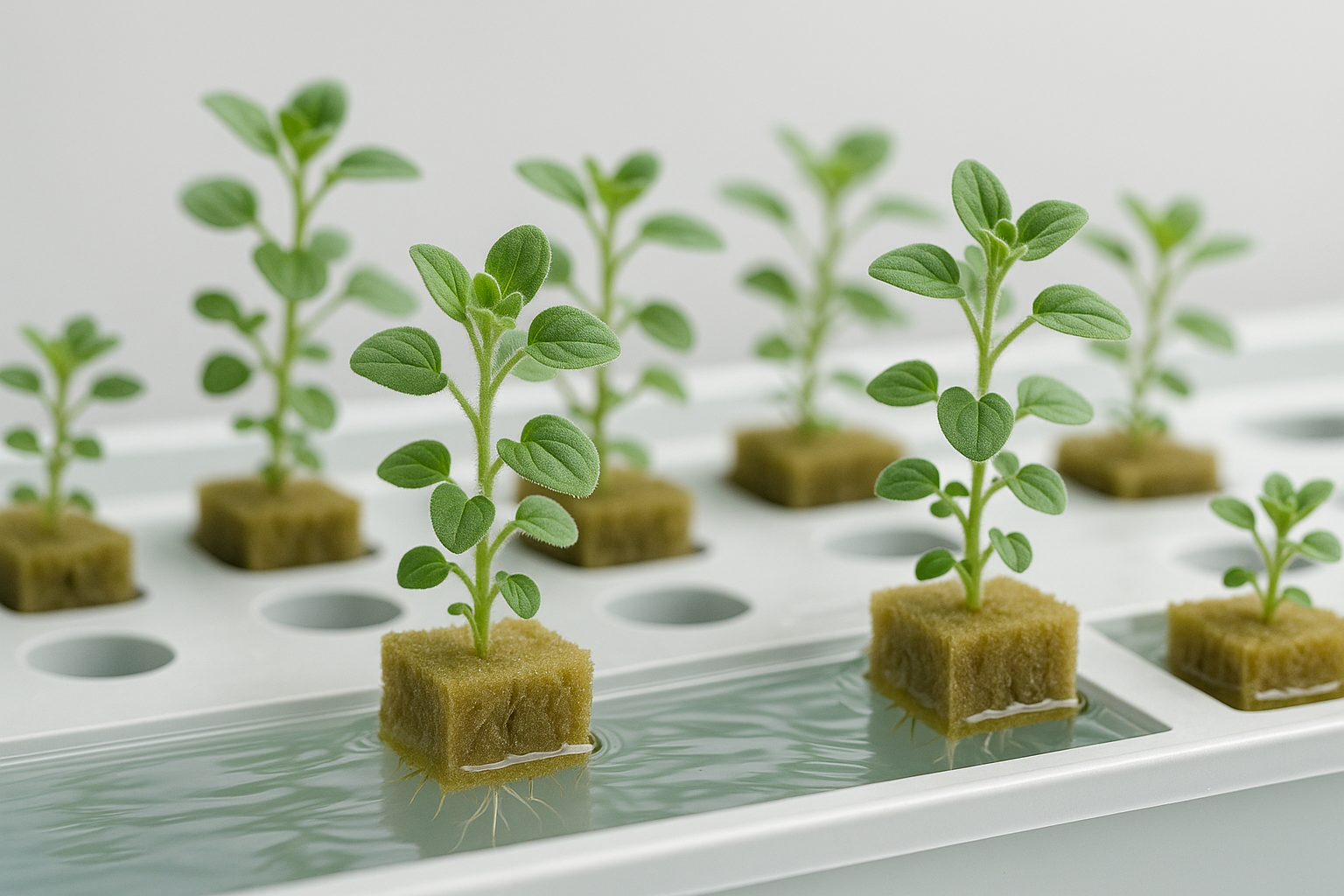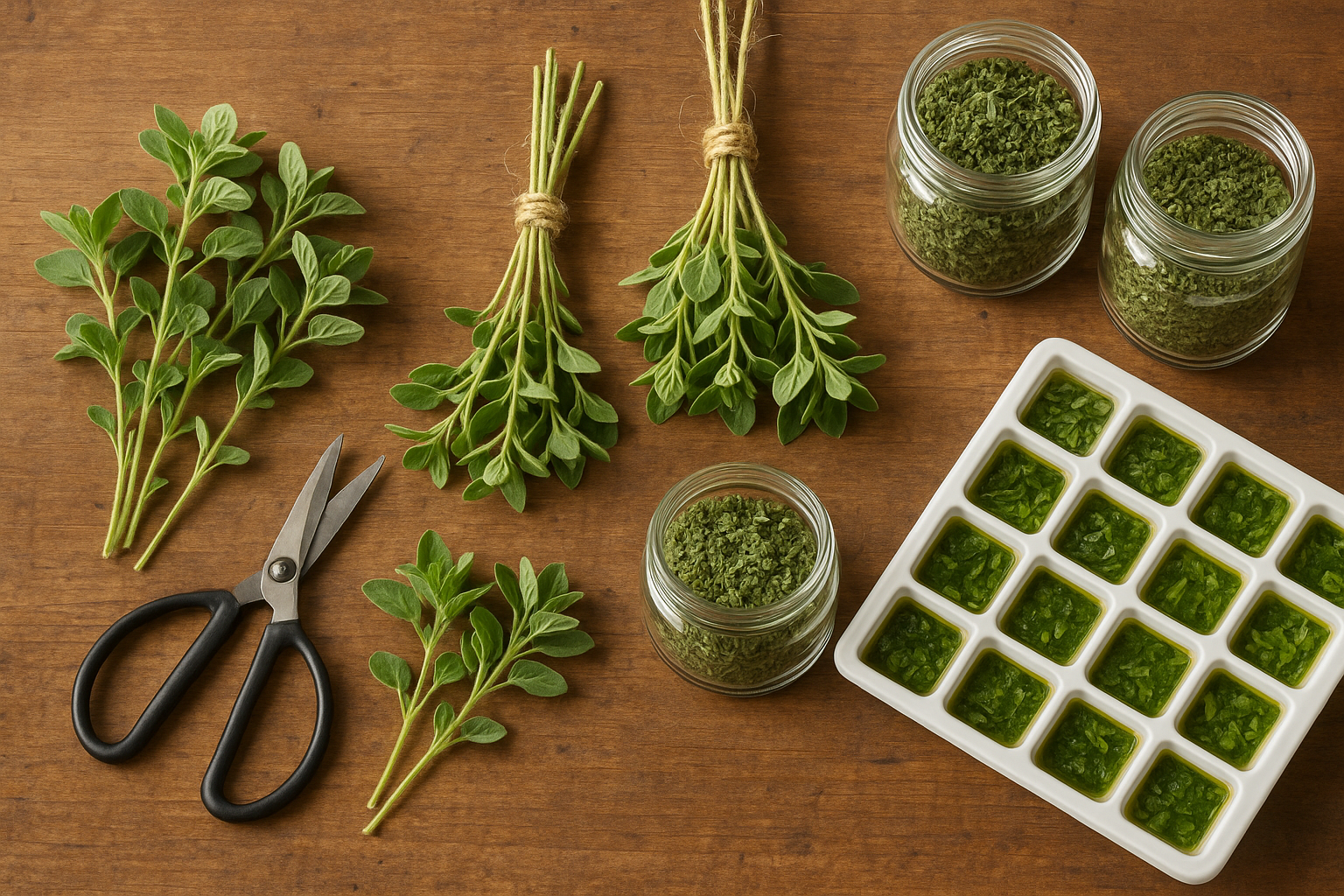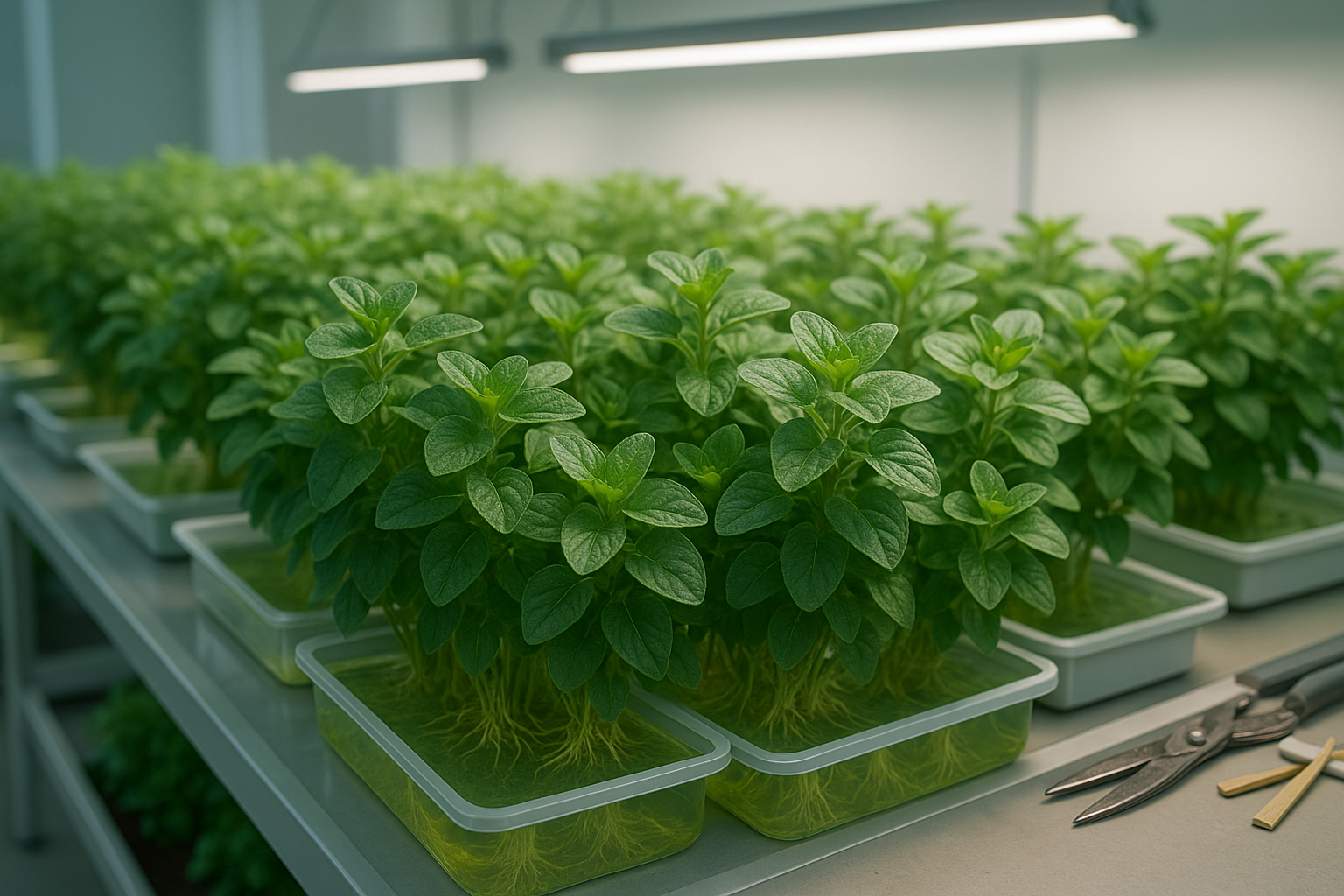Introduction to Growing Oregano Hydroponically

Hydroponic oregano is becoming a popular choice for garden enthusiasts and chefs who want fresh herbs year-round without needing outdoor space or soil. Hydroponics—growing plants in nutrient-enriched water instead of traditional soil—has gained popularity thanks to its space-saving setups, faster plant growth, and better control over pests and nutrients. This method appeals not only to urban gardeners or those with limited space, but also to anyone seeking a cleaner, more efficient way to cultivate their favorite greens.
Oregano, in particular, is an ideal candidate for hydroponic systems. Known for its pungent, earthy flavor, oregano is a staple in Mediterranean cuisine—think pizza, pasta sauces, and grilled meats. Beyond its flavor, it’s celebrated for potential health benefits such as antibacterial properties, antioxidants, and its traditional use to soothe coughs and digestive troubles. Freshly harvested oregano can elevate home-cooked meals and provide herbalists with a potent ingredient for natural remedies.
The great news? Yes, you can definitely grow oregano hydroponically—and with impressive results. This method removes many challenges of soil gardening: no more worrying about garden pests, inconsistent soil quality, or unpredictable weather. Hydroponic oregano grows cleaner and often faster, allowing you to harvest leaves when they’re most fragrant and flavorful. Home growers enjoy a steady supply of fresh oregano without seasonal limits, while commercial growers can efficiently deliver vibrant, high-quality herbs to markets and restaurants.
In short, hydroponic oregano offers both practicality and culinary delight, whether you want to garnish your favorite dish or boost your windowsill herb garden. With a basic hydroponic setup, a bit of care, and the right nutrients, you’ll be harvesting lush oregano in no time—no green thumb or backyard required.
Choosing the Right Hydroponic System for Oregano
When deciding on a hydroponic system for growing oregano, three popular options stand out: Nutrient Film Technique (NFT), Kratky method, and Deep Water Culture (DWC).
NFT systems feature a continuous flow of nutrient solution along shallow channels where the oregano roots dangle. This method is efficient for large-scale setups, offering consistent nutrient delivery and oxygenation. However, it requires pumps and regular monitoring, which may raise costs and complexity for beginners.
The Kratky method is the simplest; plants rest above a reservoir, and as they grow, their roots reach deeper into the nutrient solution. No pumps or electricity are needed, making startup inexpensive and maintenance minimal. This passive approach suits small-scale, entry-level growers who want a hassle-free system, though it’s less scalable—bigger operations may struggle to maintain balanced nutrients as plant numbers increase.
DWC suspends oregano roots in a constantly aerated nutrient solution using air pumps and stones. This approach is easy for beginners to manage at a small scale but can be expanded with larger reservoirs and multiple air pumps for experienced growers. Maintenance is fairly simple, though regular cleaning is needed to prevent root disease. DWC offers rapid growth due to ample oxygen, but it does require investment in quality pumps and backup power in case of outages.
For those just starting, the Kratky method is a low-cost, low-risk way to start harvesting fresh oregano at home. If you’re ready to expand or want to grow more plants simultaneously, consider DWC for a balanced mix of simplicity and scalability. Experienced growers looking for commercial-level efficiency may gravitate toward NFT, provided they’re comfortable with more complex equipment and routine checks.
Each system has its perks—choose the one that fits your ambition, budget, and the scale of your oregano garden.
Preparing and Starting Your Hydroponic Oregano
Getting your hydroponic oregano off to a strong start begins with selecting the best planting material. You can either purchase high-quality, disease-free oregano seeds from a trusted supplier or take cuttings from an established, healthy oregano plant.
Many hydroponic growers find that stem cuttings root faster than seeds—simply snip a 4-inch piece from an existing plant, remove the lower leaves, and place the stem in clean water until roots develop.
If you’re starting with seeds, use a sterile, well-aerated growing medium like rockwool cubes or coco coir plugs. Moisten your cubes, plant two or three seeds per cube, and maintain a consistent temperature around 70-75°F for optimal germination. Once seedlings develop two sets of true leaves, thin them to one plant per cube.
When it’s time to transfer cuttings or seedlings into your hydroponic system, use sanitized hands and tools to prevent bacteria or fungi from contaminating your setup—this is one of the easiest ways to avoid future problems. Be sure to rinse your tools, trays, and any system parts with a mild bleach solution before use.
Fill your reservoir with fresh, filtered water and add a balanced hydroponic nutrient mix formulated for herbs. Oregano prefers a pH level between 6.0 and 7.0, so check with a pH meter before placing your plants.
Give each oregano plant enough space—at least six inches apart—to ensure good air circulation and plenty of light. Proper spacing not only helps your plants thrive but also makes monitoring and harvesting much easier.
With these simple steps, you’ll set a solid foundation for healthy, flavorful hydroponic oregano that flourishes right in your own home.
Essential Nutrient & Environmental Requirements
Growing healthy oregano starts with providing the right blend of nutrients and maintaining a suitable environment. Oregano thrives best with a balanced mix of essential minerals: nitrogen for lush leaf growth, phosphorus for robust root development, and potassium for overall plant health. Include micronutrients like calcium, magnesium, and iron to prevent common deficiencies—yellowing leaves often signal low nitrogen or iron.
Keep the nutrient solution’s electrical conductivity (EC) between 1.2 and 1.8 mS/cm, as oregano prefers slightly fertile conditions without excessive salts. Aim for a solution pH of 6.0 to 7.0; this range helps roots absorb nutrients efficiently and prevents growth problems caused by nutrient lockout.
Temperature is another vital factor—oregano grows best between 18°C and 24°C (64°F–75°F). Nighttime temperatures can dip a few degrees, but avoid prolonged exposure below 10°C (50°F), which may stunt growth. Relative humidity should be moderate, ideally 40%–60%. Lower humidity reduces disease risk, while excessive moisture makes oregano vulnerable to fungal issues.
To keep plants thriving, use a digital pH and EC meter to monitor your solution, checking at least once a week or whenever you mix fresh nutrients. Adjust EC by diluting with water or adding nutrients as needed, and tweak pH with specialized solutions for hydroponics or simple products like lemon juice (to lower) and baking soda (to raise).
Use a reliable thermometer and hygrometer to track your grow room’s environmental conditions, and improve airflow with a small fan if humidity creeps above 60%. Real-world tip: invest in a timer-controlled grow light and heater for consistent day-night cycles if growing indoors, as stable conditions produce bushier, more flavorful oregano.
With routine monitoring and small adjustments, you’ll create the perfect environment for oregano to flourish.
Providing Light for Vibrant Oregano Growth
Oregano thrives in bright, direct light, and understanding its lighting needs is key to growing lush, flavorful plants indoors. This herb prefers a full-spectrum light that closely mimics sunlight—offering both blue wavelengths (for healthy leaf growth) and red wavelengths (for robust, bushy development).
In natural outdoor conditions, oregano flourishes with six to eight hours of sunlight daily, ideally placed where it receives bright afternoon rays. For indoor growers, replicating this spectrum and intensity is crucial; ordinary household bulbs often fall short.
Best Lighting Options for Indoor Oregano
- LED grow lights: The top choice for oregano, as they deliver the full spectrum without generating much heat and are energy-efficient.
- Fluorescent T5 bulbs: A good second option, but they should be positioned about 6-12 inches above the plants for optimal results.
- Avoid incandescent lights: They don’t provide the right spectrum and can overheat the plants.
Keep the lights on for 12-16 hours a day to mimic summer’s long days and prevent legginess—a common problem when oregano doesn’t get enough light. If your oregano looks spindly or stretches toward the window, it’s signaling insufficient light. Move the light source closer (but not closer than six inches to avoid burning) or switch to a stronger LED unit.
Rotating your pots every few days ensures even growth on all sides. By giving oregano bright, consistent full-spectrum light indoors, you’ll encourage compact, leafy, and highly aromatic plants, ready to elevate your favorite dishes.
Harvesting and Storing Hydroponic Oregano

For the freshest, most aromatic hydroponic oregano, timing your harvest just right makes all the difference. The best moment to harvest is just before the plant starts to flower, when the leaves are packed with essential oils that deliver robust flavor. Typically, this means snipping stems in the early morning, after the dew has dried but before the sun gets too hot—heat can cause vital oils to evaporate.
Use clean, sharp scissors or garden shears to cut stems above a node (the point where leaves branch out), leaving at least one or two sets of leaves below the cut. This method encourages the plant to send out new shoots, allowing for continual harvests throughout the growing season. Avoid removing more than a third of the plant at any one time to prevent stress and promote healthy regrowth.
Storing Hydroponic Oregano
After harvesting, preserving that fresh oregano flavor is key. For short-term storage, wrap stems in a slightly damp paper towel and place them in a sealed plastic bag in the fridge for up to a week.
For longer-term preservation, drying and freezing are both excellent options.
Drying
- Gather small bundles of stems and tie them together.
- Hang them upside down in a warm, well-ventilated spot away from direct sunlight.
- Once the leaves crumble easily between your fingers, strip them from the stems.
- Store the leaves in an airtight container away from heat and light.
Freezing
- Rinse and pat dry the leaves.
- Spread them in a single layer on a baking sheet and place in the freezer.
- Once frozen, transfer the leaves to a sealed freezer bag or container.
- Alternatively, chop and freeze the leaves in olive oil inside an ice cube tray for easy use in cooked dishes.
Each of these methods helps lock in the signature aroma and oils of your hydroponic oregano, so you can enjoy garden-fresh flavor all year long.
Common Hydroponic Oregano Problems & Solutions
Growing oregano hydroponically is generally rewarding, but common problems like root rot, nutrient imbalances, pests, and diseases can still sneak in.
Root rot is a frequent headache, showing up as brown, mushy roots and wilted leaves. This usually happens when water temperatures get too high or oxygen levels drop. You can prevent it by using an air stone for aeration and keeping the water cool (65-70°F is ideal).
Nutrient imbalances appear as yellow leaves, stunted growth, or leaf tip burn. Regularly check your water’s pH (ideally 6.0-7.0 for oregano) and electrical conductivity (EC) to ensure your nutrient solution isn’t too concentrated or too weak. Adjust levels with a simple digital meter and always top up with fresh water, not just nutrients.
While oregano is generally resistant to pests, whiteflies, aphids, or spider mites may still appear, especially in warm, humid conditions. If you spot sticky residue, webbing, or small bugs, rinse plants with water or spray with an organic insecticidal soap.
Fungal diseases like powdery mildew may also develop if air circulation is poor. Adding a small fan for airflow and avoiding wetting the foliage during watering can make a big difference.
As a proactive approach, always clean your hydroponic system thoroughly between crops—soak parts in a diluted bleach solution and rinse well. Weekly checks for algae buildup, clogging, or dead plant matter help keep the system running smoothly and prevent issues before they start.
By monitoring your oregano closely and sticking to these preventative habits, you’ll be much more likely to enjoy strong, fragrant harvests all year round.
